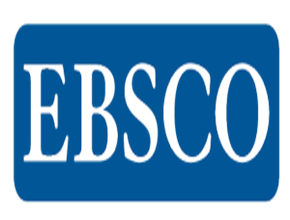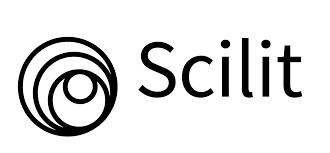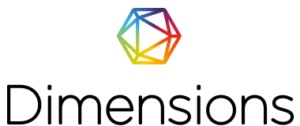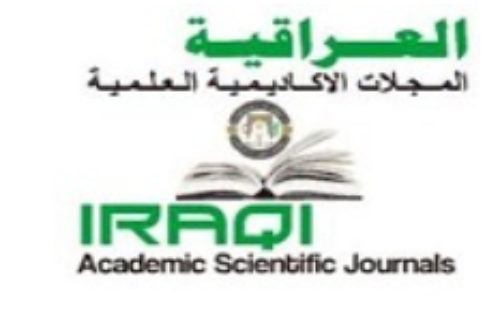Measuring the Concentrations of Heavy Elements in Some Human Organs (Breast, Thyroid Gland, and Uterus) Affected by Cancer in Thi-Qar Governorate
DOI:
https://doi.org/10.32792/utq/utjsci/v12i1.1331Keywords:
heavy elements, thyroid gland, breast, uterus, radiation effectsAbstract
Heavy elements are one of the three causes of cancer. Heavy elements in cancerous tissues from certain organs (breast, thyroid, and uterus) are measured. 36 samples were collected from malignant and benign tumors divided into three groups, 12 samples for each one (breast, thyroid, and uterus), consisting of six affected samples and six healthy samples. Measurements were conducted using an inductively coupled plasma mass spectrometry (ICP-MS) device for heavy metals such as Bi, Co, Cr, Cu, Ni, Sr, Mn, and Mo. The current study recorded the highest concentration of strontium in breast cancer patients and the lowest cobalt concentration. It was found that there was a decrease in bismuth, cobalt, and nickel in cancerous tissues compared to benign tissues. At the same time, all other elements increased in cancerous tissues compared to healthy tissues. In the thyroid, the highest concentration was Sr , and the lowest was Ni. It was found that Bi, Cr, and Sr had low values in affected tissues compared to healthy tissues, while all other elements increased in cancerous tissues compared to healthy ones. In the uterus, the highest concentration was also strontium , and the lowest was molybdenum. There was a decrease in bismuth and copper in cancerous tissues compared to healthy ones, while all other elements increased at a value of p < 0.05.
Received: 2024-09-21
Revised:2025-01-12
Accepted: 2025-01-27
References
R. N. Bhargava, V. Rajaram, K. Olson, and L. Tiede, “Multidisciplinary Nature of Environmental Studies,” Ecol. Environ., no. 3, pp. 1–6, 2019, doi: 10.1201/9780429058226-1.
WHO, “Nature, biodiversity and health: an overview of interconnections,” World Heal. Organ. Eur. Cent. Environ. Hum. Heal., pp. 1–32, 2021, [Online]. Available: https://www.euro.who.int/en/health-topics/environment-and-health/urban-health/publications/2021/nature,-biodiversity-and-health-an-overview-of-interconnections-2021
V. Gitz, A. Meybeck, L. Lipper, C. Young, and S. Braatz, Climate change and food security: Risks and responses. 2016. doi: 10.1080/14767058.2017.1347921.
A. L. Aim, “Economics and the environment,” Environ. Sci. Technol., vol. 25, no. 10, p. 1685, 1991, doi: 10.1021/es00022a601.
A. A. Mohammed and N. F. Tawfiq, “Radioactivity Levels in Water Samples of Tigris River in Baghdad City, Iraq,” Iraqi J. Sci., vol. 63, no. 6, pp. 2540–2550, 2022, doi: 10.24996/ijs.2022.63.6.21.
A. R. Mathloom, D. K. Gatea, and A. R. Jlood, “Study of Histological Changes of Testis in Rats of Different Ages when Exposed to Frequency 10GHZ within the X-Band Microwave,” J. Adv. Res. Appl. Sci. Eng. Technol., vol. 52, no. 1, pp. 180–191, 2025, doi: 10.37934/araset.52.1.180191.
R. D. Mahdia and A. R. Mathloom, “Studying the Effect of Radiation Emitted from Mobile Phones and Home Routers on D3 and Calcium Levels in Rabbits,” vol. 278, no. 3, pp. 275–278, 2024.
M. F. Ali and S. Ray, “Quasi optical effects of non-ionizing radiation inside pregnant woman abdomen,” Prog. Electromagn. Res. M, vol. 35, no. January, pp. 31–38, 2014, doi: 10.2528/PIERM14010703.
H. K. Matthews, C. Bertoli, and R. A. M. de Bruin, “Cell cycle control in cancer,” Nat. Rev. Mol. Cell Biol., vol. 23, no. 1, pp. 74–88, 2022, doi: 10.1038/s41580-021-00404-3.
J. Feunteun, P. Ostyn, and S. Delaloge, “Tumor cell malignancy: A complex trait built through reciprocal interactions between tumors and tissue-body system,” iScience, vol. 25, no. 5, p. 104217, 2022, doi: 10.1016/j.isci.2022.104217.
R. A. Weinberg, “How cancer arises.,” Sci. Am., vol. 275, no. 3, pp. 62–70, 1996, doi: 10.1038/scientificamerican0996-62.
R. Adolph, “済無No Title No Title No Title,” pp. 1–23, 2016.
J. J. Kim, Y. S. Kim, and V. Kumar, “Heavy metal toxicity: An update of chelating therapeutic strategies,” J. Trace Elem. Med. Biol., vol. 54, no. March, pp. 226–231, 2019, doi: 10.1016/j.jtemb.2019.05.003.
J. Briffa, E. Sinagra, and R. Blundell, “Heavy metal pollution in the environment and their toxicological effects on humans,” Heliyon, vol. 6, no. 9, p. e04691, 2020, doi: 10.1016/j.heliyon.2020.e04691.
J. O. Duruibe, M. O. C. Ogwuegbu, and J. N. Egwurugwu, “Heavy metal pollution and human biotoxic effects,” Int. J. Phys. Sci., vol. 2, no. 5, pp. 112–118, 2007, doi: 10.1016/j.proenv.2011.09.146.
F. J. Richard, I. Southern, M. Gigauri, G. Bellini, O. Rojas, and A. Runde, “Warning on nine pollutants and their effects on avian communities,” Glob. Ecol. Conserv., vol. 32, no. October, p. e01898, 2021, doi: 10.1016/j.gecco.2021.e01898.
F. Amlinger, M. Pollack, and E. Favoino, “Heavy metals and organic compounds from wastes used as organic fertilizers. Final report for ENV. A. 2./ETU/2001/0024.,” Final Rep. ENV. A. 2./ETU/2001/0024., no. July, p. 35, 2004.
et al., “Contaminant Metals as Cardiovascular Risk Factors: A Scientific Statement From the American Heart Association,” J. Am. Heart Assoc., vol. 12, no. 13, 2023, doi: 10.1161/jaha.123.029852.
T. A. Muluh, X. Sheng Shu, and Y. Ying, “Targeting cancer metabolic vulnerabilities for advanced therapeutic efficacy,” Biomed. Pharmacother., vol. 162, p. 114658, 2023, doi: 10.1016/j.biopha.2023.114658.
A. Manuscript, “The microbiome and cancer Robert,” Changes, vol. 29, no. 6, pp. 997–1003, 2012, doi: 10.1038/nrc3610.The.
S. Badrigilan, J. Choupani, H. Khanbabaei, M. Hoseini-Ghahfarokhi, T. J. Webster, and L. Tayebi, “Bismuth-Based Nanomaterials: Recent Advances in Tumor Targeting and Synergistic Cancer Therapy Techniques,” Adv. Healthc. Mater., vol. 9, no. 7, 2020, doi: 10.1002/adhm.201901695.
Downloads
Published
License
Copyright (c) 2025 University of Thi-Qar Journal of Science

This work is licensed under a Creative Commons Attribution 4.0 International License.












